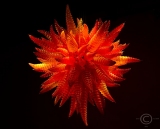- Forum
- Photography and Camera Forum
- Taking the Photo | Editing | The art of Photography!
- Tips and Taking Photos
- Excellent Article on Live View
Excellent Article on Live View
-
 Topic Author
Topic Author
- Baydream
- Moderator
-
- Canoni/60D/70D/5DmkIII
- Followers: 388
- Posts: 11185
-
Points:
7280
Post #75509
www.cameraclubofrichmond.com/Newsletter/...thern%20Exposure.pdf
Shoot, learn and share. It will make you a better photographer.
fineartamerica.com/profiles/john-g-schickler.html?tab=artwork
-

- photobod
- Paparazzi
-
- Nikon D800 + D300
- Followers: 563
- Posts: 8907
-
Points:
150
Post #75561
Baydream wrote: Again Jeff Claypoole of my Camera Club in Virginia has prepared another excellent article, this time on Live View Focusing. The link is to out monthly newsletter. The article starts on page 9.
www.cameraclubofrichmond.com/Newsletter/...thern%20Exposure.pdf
Have tried viewing but it brings up a blank white screen every time I try ??????
www.dcimages.org.uk
"A good photograph is one that communicate a fact, touches the heart, leaves the viewer a changed person for having seen it. It is, in a word, effective." - Irving Penn
-
 Topic Author
Topic Author
- Baydream
- Moderator
-
- Canoni/60D/70D/5DmkIII
- Followers: 388
- Posts: 11185
-
Points:
7280
Post #75579
Guess we'll have to get there the old fashioned way.photobod wrote:
Baydream wrote: Again Jeff Claypoole of my Camera Club in Virginia has prepared another excellent article, this time on Live View Focusing. The link is to out monthly newsletter. The article starts on page 9.
www.cameraclubofrichmond.com/Newsletter/...thern%20Exposure.pdf
Have tried viewing but it brings up a blank white screen every time I try ??????
www.cameraclubofrichmond.com Click on Newsletters, then select current.
Well It appears they are doing some work on the site over the long US holiday weekend. It is a pdf and takes about a minute to load. I was able to use the link (but it took a while to load).
Please try again and let me know if it works for you. The base site is pretty good on it's own.
Shoot, learn and share. It will make you a better photographer.
fineartamerica.com/profiles/john-g-schickler.html?tab=artwork
Post #75605
Focusing Using Live View
Tack sharp focus, we've all marveled at the optical clarity of photos seen in magazines. It's amazing how every
detail is perfectly recorded. Autofocus has made the life of photographers much easier. Especially, as our eyes
start to age to the point of needing glasses.
While autofocus can be great at getting it right most of the time, tack sharp critical focus still needs the human
eye to get it spot on consistently. For sports photos or activities with lots of movement, autofocus is still the
best bet in town because of the need to focus quickly, but when the action dies down, there is a new methodology that should be considered and exploited.
With the advent of DSLR cameras that can record video, a new method for manually focusing the lens to
achieve tack sharp focus has emerged. It utilizes the Live View video mode of these new cameras. It's extremely accurate and helpful when shooting more static type photos such as landscapes or macro shots. Read
on to find out how to leverage this new feature that is revolutionizing focusing.
Live View mode turns the back viewing screen of the camera into a TV screen. The viewscreen displays the
data that is being received by the camera sensor. Changing the autofocus switch for the camera lens to manual
puts the responsibility for focusing in the hands of the photographer. Trying to focus the lens with a 3 inch
screen may sound like an impossible feat, but Live View offers the ability to zoom in on the screen to both five
times (5x) or ten times (10x) magnification. With just a couple of touches of a button, the vision of an eagle is
suddenly in your hands making it easy to get tack sharp focus. Once the focus is set, compose and press the
shutter button. It's that simple, and for those photographers with glasses, it also means you don't have to fiddle
with them when taking a photo.
There is no other method of focusing the camera that is more accurate than Live View. There are two reasons
why: First, as stated above, is the ability to zoom in to five/ten times (5x/10x) magnification when focusing.
This allows the photographer to see, in minute detail before the image is made, exactly what will be in sharp
focus. The second reason is, Live View utilizes the same optical path to the camera sensor as is used when the
image is made. This is significant because of the design of DSLR cameras and is explained below.
Member Article: Jeff Claypoole
Page 9 Camera Club of Richmond — Southern Exposure Newsletter
- May 2011 Camera Club of Richmond — Southern Exposure Newsletter Traditionally, with DSLR cameras, the photographer looks through the viewfinder to see the image through the
lens. In actuality, the image/light entering through the front of the lens is redirected off a mirror, hanging inside of the camera body, up into the viewfinder where the image is seen. The viewfinder is also where exposure meter and autofocus systems are located. When the shutter button is pressed, the following sequence of
events happen:
1. The autofocus system determines the subject distance and focuses the lens.
2. The exposure meter determines the correct ISO, aperture and shutter speed.
3. The aperture blades inside of the lens are stopped down to the correct aperture size (f/stop).
4. The mirror inside of the body slaps up allowing a direct path for the image/light from the lens to reach the
camera sensor.
5. The shutter curtain opens and closes thus exposing the sensor to light.
6. The camera saves the recorded image to the camera's memory card.
The recorded image is displayed on the back viewscreen of the camera.
When the camera is autofocusing, during step #1 above, the redirection of the lens image by the mirror up into
the viewfinder is one of the main factors that can introduce focusing errors. In step #4, the lens image/light direction is changed when the mirror slaps up out of the way to allow the light to pass to the back of the camera
body and onto the camera sensor. If there is a distance difference between the mirror to viewfinder and the
mirror to camera sensor of more then 10 microns (millionths of an inch), it will affect the camera's ability to
critically focus. Using Live View eliminates this possible error from the image taking process.
When focusing in Live View mode, the light/image from the lens is always directed onto the camera sensor.
The plane of critical focus that is seen on the viewscreen and set by the photographer when manually focusing
the lens is what will be recorded.
It should be noted here that there may be other factors that can affect critical focus. Issues such as lens field
curvature, focus shift, as well as camera shake, can all contribute to less then optimal focus. Live View is not a
panacea for tack sharp images, but it's the best method for critically accurate focus.
Using Live View, when possible, to attain tack sharp focus is well worth the extra few moments to takes to
focus the camera. Speaking personally, it has put the "Wow Factor" back into my images. I am taking more
"keepers", and it has brought my photography up to a new level. I can not recommend it highly enough.
If you have any questions or comments, I would truly enjoy talking with you further at our next meeting.
Cheers, Jeff Claypoole
“Amateurs worry about equipment, professionals worry about money, masters worry about light, I just make pictures… ” ~ Vernon Trent
-

- John Landolfi
- Super User
-
- Nikon D3S, D7100, Sony RX10, Canon G11, F4s, F2sb, RetinaflexIV etc, etc
- Followers: 1205
- Posts: 21605
-
Points:
40394
Post #75633
- Forum
- Photography and Camera Forum
- Taking the Photo | Editing | The art of Photography!
- Tips and Taking Photos
- Excellent Article on Live View
Latest Reviews
The Olympus Pen E-P7 is an affordable micro four thirds mirrorless camera with 4K video capabilities, a 20.3MP sensor, and 121 focus points, making it a solid entry-level camera for beginners.
The Panasonic G9 II is a 25.2-megapixel micro four thirds camera with numerous features that make it punch out of its weight class, like 779 AF points, 5.8K video, and weather sealing.
The Fujifilm XT5 is a 40MP mirrorless camera capable of 6.2K video at 30p. With those specs, it’s an ideal choice for photographers needing a camera to pull double duty for imaging and video.
The Canon EOS R100 is an entry-level mirrorless camera introduced in 2023. But just because it’s an entry-level camera doesn’t mean it’s a bare-bones camera. Find out why in this review!
Forum Top Posters
-
1amandadams 1 post
Latest Articles
Upgrade your kit in 2024 with the best intermediate camera on the market! The question is, what camera fits the bill? We’ve got three top options for you to choose from in this buyer’s guide.
The best photography jobs right now are a mix of tried-and-true gigs like wedding photography and new jobs highlighting AI’s capabilities, travel, and videography.
The Olympus Pen E-P7 is an affordable micro four thirds mirrorless camera with 4K video capabilities, a 20.3MP sensor, and 121 focus points, making it a solid entry-level camera for beginners.
Starting a photography business is one thing; sustaining your business over a long period of time is another. Use the tips in this professional photography guide to build something with longevity!
The Panasonic G9 II is a 25.2-megapixel micro four thirds camera with numerous features that make it punch out of its weight class, like 779 AF points, 5.8K video, and weather sealing.
Cinematic photography is an interesting genre that combines photographic and videographic skills along with effective storytelling techniques. The result? Highly impactful images!
Newborn photography requires skill, the right gear, and a lot of patience. This beginner’s guide discusses critical topics that will help you be more prepared for before, during, and after the shoot.
To fill the frame means to expand the footprint of the subject in your shot. Get in close, zoom in, crop the image, or use other techniques to bring the subject to the forefront.
















